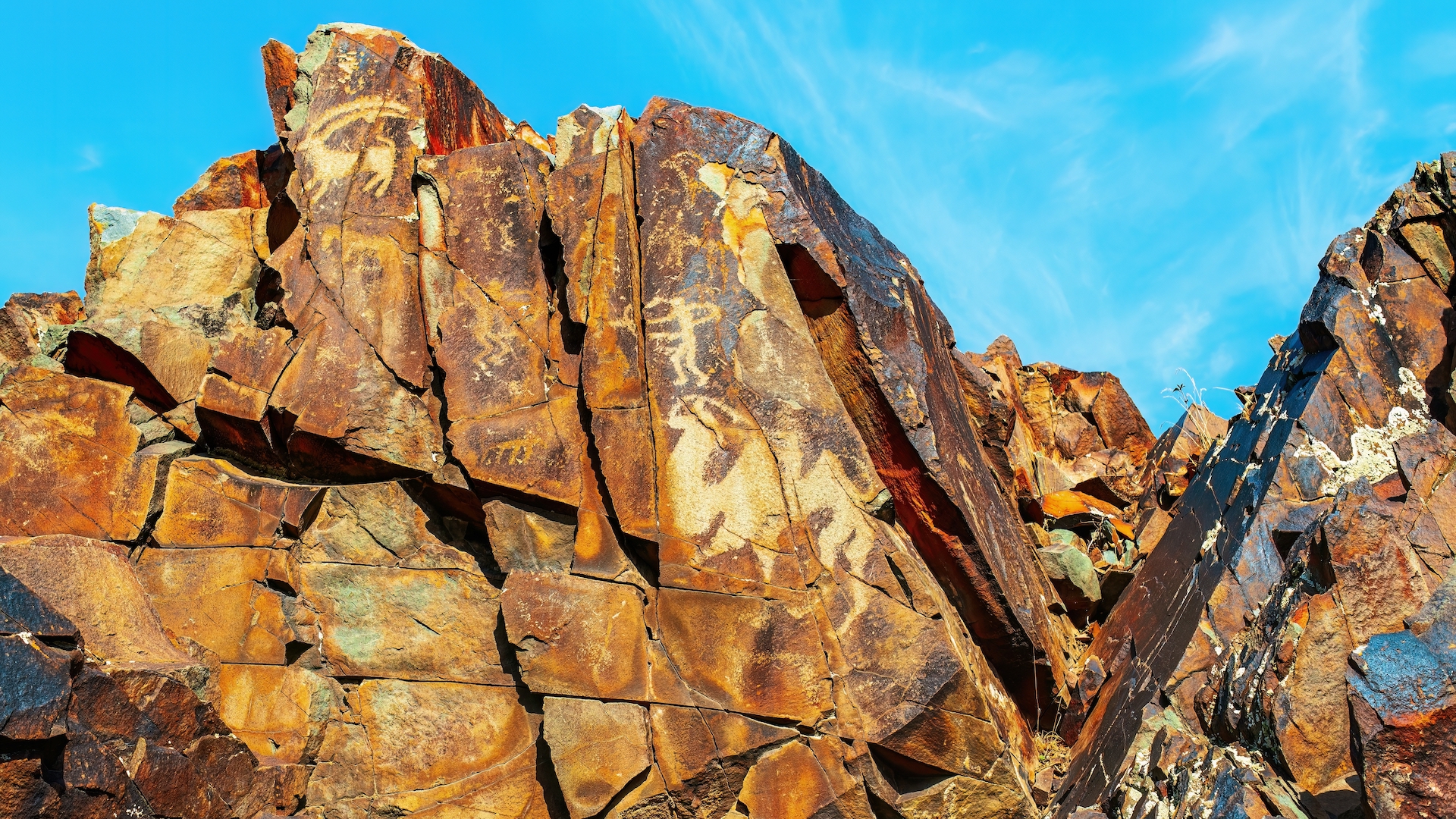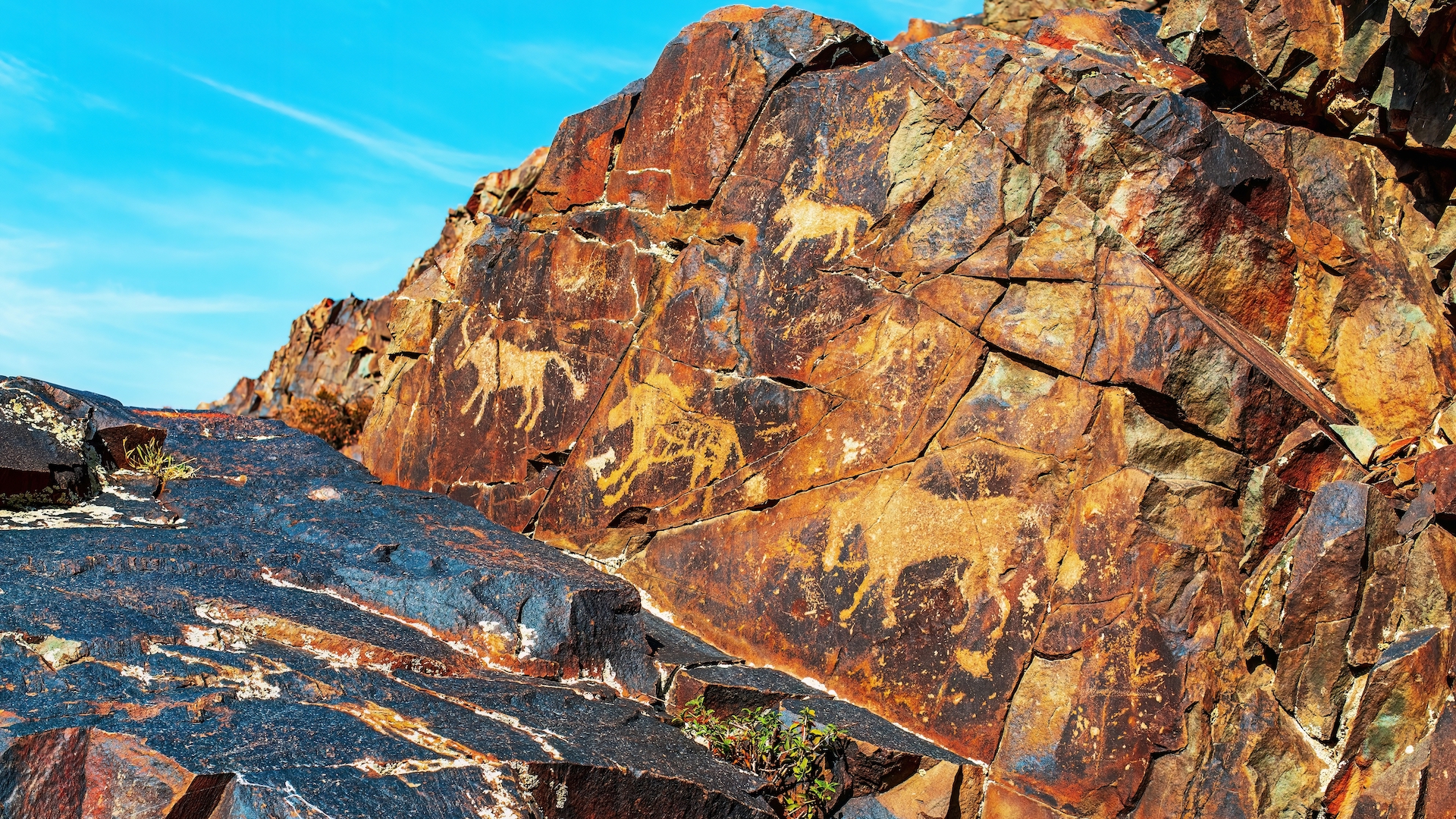3,500-year-old rock art of wild sheep and double-humped camels revealed in Kazakhstan
Volunteers on an environmental clean-up in Kazakhstan uncovered rock art dating to the Bronze or Iron ages, but archaeologists say they already knew about the site.

About 100 petroglyphs, dating back around 3,500 years, have been discovered in Kazakhstan, several news reports say.
However, a scholar told Live Science that this discovery is not entirely new, as it had been kept a secret to protect the site until it could be examined more closely.
Petroglyphs are engravings created by chipping away at a rock face. The petroglyphs that are reportedly new were discovered in the Zhambyl (also spelled Jambyl) region, located in southeastern Kazakhstan. They date back to the Bronze or Early Iron ages, according to the Astana Times, a news outlet in Kazakhstan.
Exactly how long the Bronze and early Iron ages lasted in Kazakhstan is a topic of debate among scholars, but together they likely date to between 4,000 and 2,500 years ago. The petroglyphs were found during a nationwide volunteer campaign that aims to clean the environment, the Astana Times noted. After the potential discovery was made, local archaeologists were brought in to examine the petroglyphs.
The petroglyphs show animals and people, with examples including double-humped camels, argali (a type of wild sheep) and depictions of people hunting, the Astana Times reported. The petroglyphs are spread across an area that is 66 feet to 82 feet (20 to 25 meters) long and 5 feet to 6.6 feet (1.5 to 2 m) in width, Sauran Kaliyev, an archaeologist who examined the petroglyphs, told the Astana Times.
However, the site is "not at all new" and is well known among specialists, Viktor Novozhenov, an archaeologist with the Saryarka Archaeological Institute at Karaganda State University in Kazakhstan, told Live Science in an email.
Get the world’s most fascinating discoveries delivered straight to your inbox.
Novozhenov, who was not involved with the volunteer project, noted that the site has not been studied in detail and that its petroglyphs have not yet been described in a peer-reviewed journal. When scholars find a rock art site in Kazakhstan, they sometimes prefer to keep its location a secret until it can be properly recorded and published, said Novozhenov, noting that destruction of such rock art sites by vandals or other individuals is sometimes a problem.
Novozhenov said that more funding and resources are needed to properly record these rock art sites. "We don't have enough experts and funds for needed analyses and [fieldwork]," he said.
The archaeologists and government officials involved with the research described in the Astana Times did not return requests for comment at time of this publication.

Owen Jarus is a regular contributor to Live Science who writes about archaeology and humans' past. He has also written for The Independent (UK), The Canadian Press (CP) and The Associated Press (AP), among others. Owen has a bachelor of arts degree from the University of Toronto and a journalism degree from Ryerson University.



